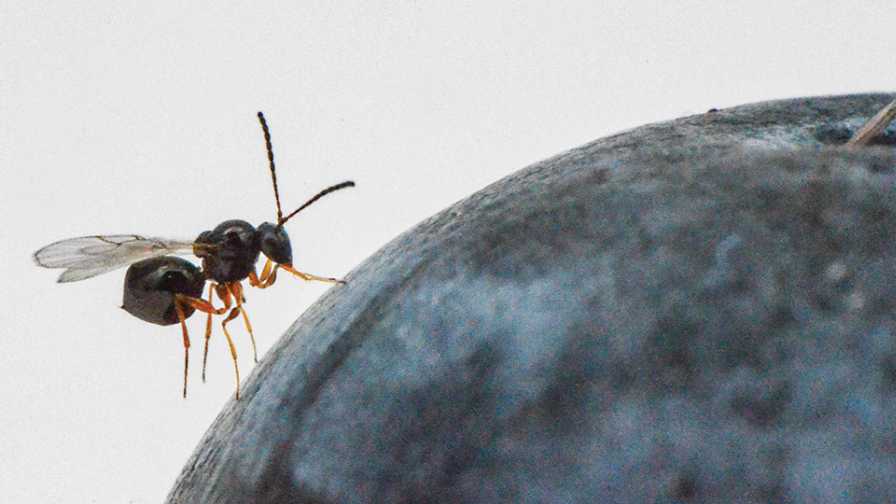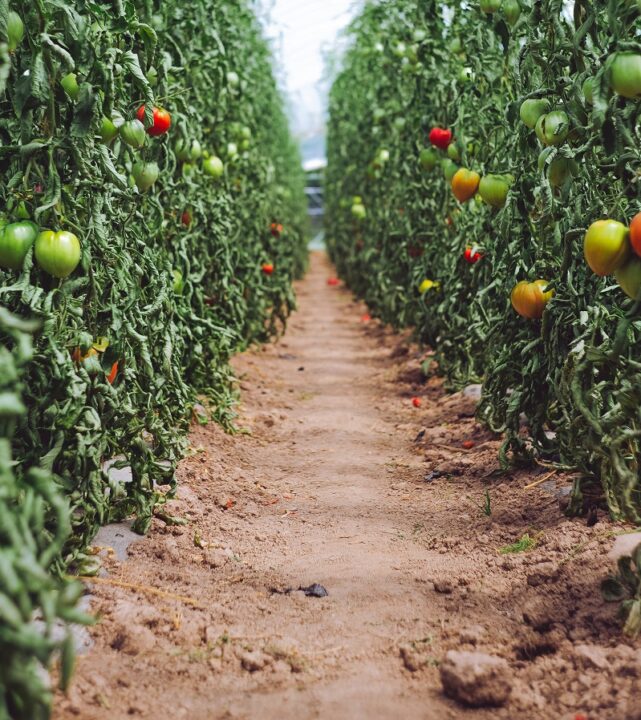Why There Is No Room for Complacency With Spotted Wing Drosophila
Seven years later, cherry growers in Eastern Washington have not forgotten the last significant threat posed by spotted wing drosophila (SWD). That, according to Dylan Beal, a Postdoctoral Research Associate at Washington State University (WSU), is a good thing.
While the region is less suitable to SWD than the state’s coastal area, as well as the entire eastern half of the U.S., there always remains the possibility of getting “hammered” by the insect from time to time, Beal told attendees of the North Central Washington Tree Fruit Days conference.
“It’s clear that this is still a pest that we need to watch out for,” Beal says. “The very warm and early season of 2015 stands out as an example of extreme SWD pressure, with approximately 250 lots with SWD. Even in the years where we are hovering around 50 lots with SWD, that is still a lot. If cherry fruit fly were detected at that level, we would be unable to ship fruit.”
Fortunately, two large federal projects specific to SWD are amid four-year runs that end in 2024. One is a USDA Specialty Crop Research Initiative (SCRI) with nationwide participation; the other an area-wide USDA project that focuses on the West Coast.
Beyond Crisis Response
The focus of the nationwide SCRI project is to move from crisis response to long-term management of SWD. The goal of the current grant is to collate all the research on alternative tactics, put them into practice, and move closer to a true Integrated Pest Management (IPM) program.
For the Washington component of the SCRI, Beal is part of an all-WSU team that includes cherry entomologists Tobin Northfield and Betsy Beers, blueberry and grape entomologist Gwen Hoheisel, and economists Karina Gallardo and Suzette Galinato.
As one of a half-dozen research groups across the country, the group examined trap efficacy while evaluating nine combinations of traps (PBJ, red sticky panels, and liquid deli cups) and lures (Trece’s high-specificity, Scentry’s broad-spectrum, and no-lure check). The results mirrored previous tests in Washington: The Scentry lure was the most attractive to SWD; the PBJ trap — designed in Beers’ lab — had the highest capacity for capture.
The same team, having heard positive reviews about the Decoy SWD egg trap developed by Oregon State University’s Vaughn Walton, obtained experimental use permits (EUPs) for blueberries and cherries from the Washington State Department of Agriculture (WSDA). Decoy packets were deployed in mid-July in the middle of the Pacific Northwest heat wave of 2021. For the blueberries, they were put next to emitters because the product must stay moist in order to be attractive to the flies. “Unfortunately, the traps were also very attractive to rodents, and this particular field had an abundance of them,” Beal says. “They destroyed most of our dispensers.”
Meanwhile, the cherries used a drip system, but because this was postharvest, they were irrigated even less than usual. “And with last summer’s heat wave, pretty much all of the dispensers dried out,” Beal says.
The WSU team also screened six populations of SWD against insecticides: Entrust (spinosad, Corteva Agriscience), Delegate (spinetoram, Corteva Agriscience), malathion, Mustang Maxx (zeta-cypermethrin, FMC Corp.), Lannate (methomyl, Corteva), and Imidan (phosmet, Gowan Co.). Again, the experiment was hampered by the heat, particularly in Eastern Washington, although three populations were collected in blueberry fields in Western Washington.
“The good news is that all of those flies died” when screened with the six insecticides, Beal says.
An additional project, funded by the Washington Tree Fruit Research Commission, concerns integrating control of both SWD and the vectors of a deadly cherry disease.
“Washington cherry growers face a unique challenge in managing SWD as well as the leafhopper vectors that spread X disease,” Beal says. “The question here is how does the management of X disease affect management of SWD and vice-versa.”
Separate postharvest treatments involving Extenday groundcover and Surround foliar application (kaolin, NovaSource) were comparable while providing dual control of leafhoppers and SWD. Extenday reduced SWD counts by 47-72% while Surround reduced SWD counts by 41-71%.
Meanwhile, the SWD area-wide project, led by USDA Research Entomologist Jana Lee, based in Corvallis, OR, is focusing on sweet cherry and berry crops in Washington, Oregon, and California. The project design uses four pairs of sites across the states. The first year was dedicated to gathering baseline data. Results of the IPM management strategies tested will be forthcoming in the future years of the project.
The summer heat wave impacted SWD populations at the Washington area-wide sites, with counts not reaching detectable levels until well into September. As the fall progressed, site one traps caught significantly more SWD than at site two. Fruit infestation by SWD at both sites was quite low, and researchers did not detect SWD parasitoids in their sentinel traps.
“This provides a good baseline, as in 2022 we plan on area-wide releases of select parasitoid species at site one,” Beal says.

Researchers are looking at natural enemies to combat spotted wing drosophila. The most promising is a beneficial wasp from the genus Ganaspis.
Photo by Tim Haye
Speaking of Parasitoids
The best news on the SWD front occurred in September, when researchers found live populations of two parasitoid species — Ganaspis brasiliensis and Leptopilina japonica — in the wild of Washington state.
UC Berkely Extension Specialist Kent Daane had originally brought a separate population of the parasitoids to the U.S. from South Korea in 2013-2014 to be reared and tested in quarantine for classical biological control.
“The primary test they need to pass is host specificity. If they attack a wide range of native species, they will likely fail this test,” Beal says. “Just to give you a general idea for how lengthy and tedious this process is, it usually takes at least a decade to get from collection to release.”
Daane wound up obtaining a release permit in 2021, although only for Ganaspis brasiliensis. By that time, both species had already arrived in North America on their own. In 2019 both species were found in British Columbia by Paul Abram of the Agassiz Research and Development Centre. In the fall of 2020, Chris Looney, of the WSDA, also discovered Leptopilina in an Asian Giant Hornet trap near the Canadian border.
“Parasitoids have a way of getting around international borders,” Beal says. “And as luck would have it, that’s just what Ganaspis and Leptopilina did.”
The parasitoids recently found in Washington state were confirmed to be of the G1 strain, which is the most host-specific and only strain currently authorized for release in the U.S.
What is the significance?
“First, it may take a while to ramp up rearing efforts in the designated facilities; for Washington this is the USDA Wapato lab,” Beal says. We also don’t have an exact date yet for getting a starting colony from the California rearing stock, although it is expected within a matter of weeks. And, truthfully, rearing Ganaspis can be challenging, and colonies can fail. But fortunately, we likely have a giant backup colony – Whatcom County itself. Having a wild population could bail us out of a tight corner.
“We also have two parasitoid species. Leptopilina may not have cleared the regulatory host-specificity hurdle, but it’s still a good parasitoid, and its activity may be complementary to Ganaspis. All these things could give us a jump start on the rearing and release of either or both species and, more importantly, an understanding of their impact on SWD.”










